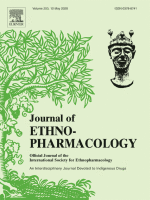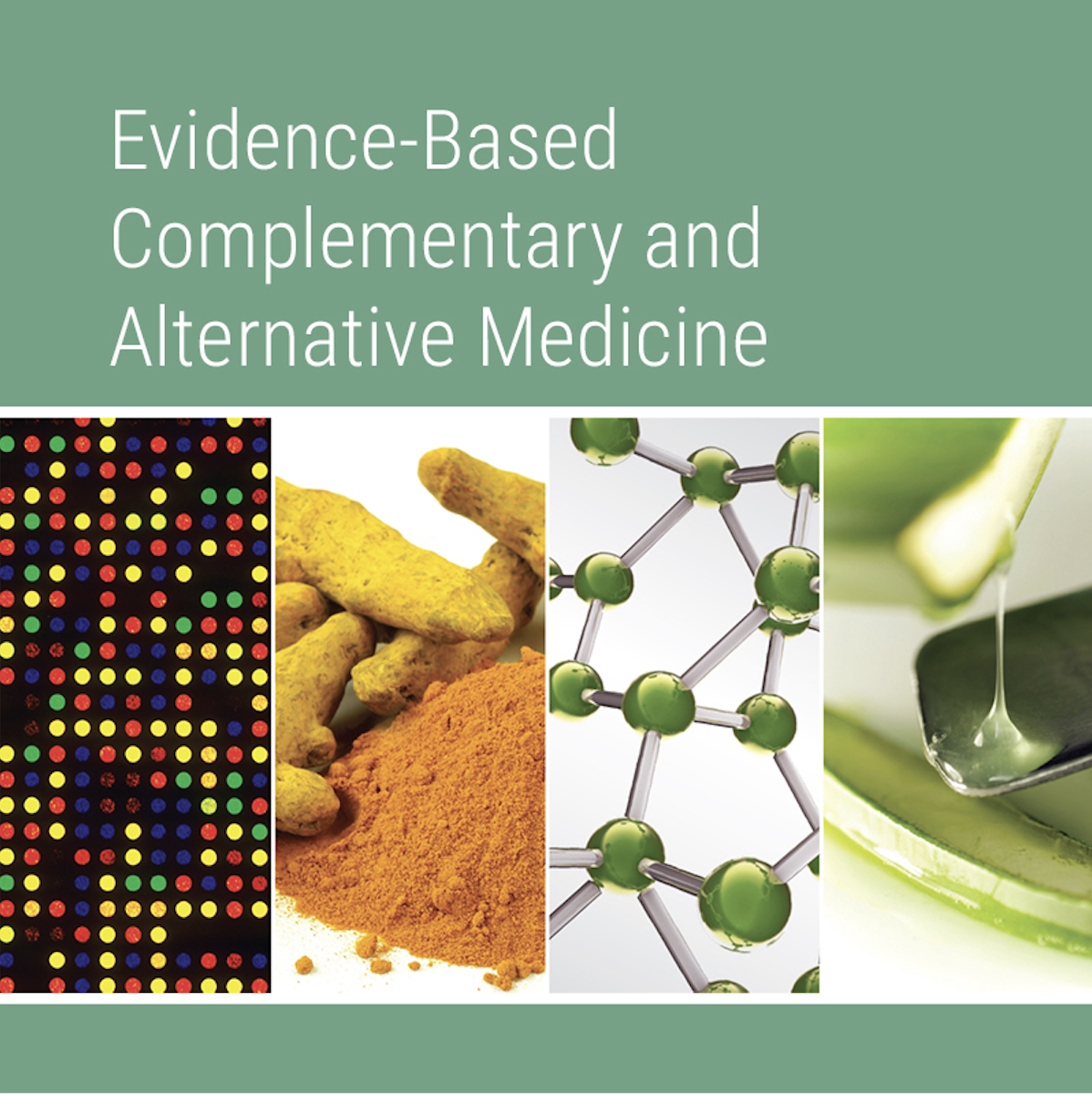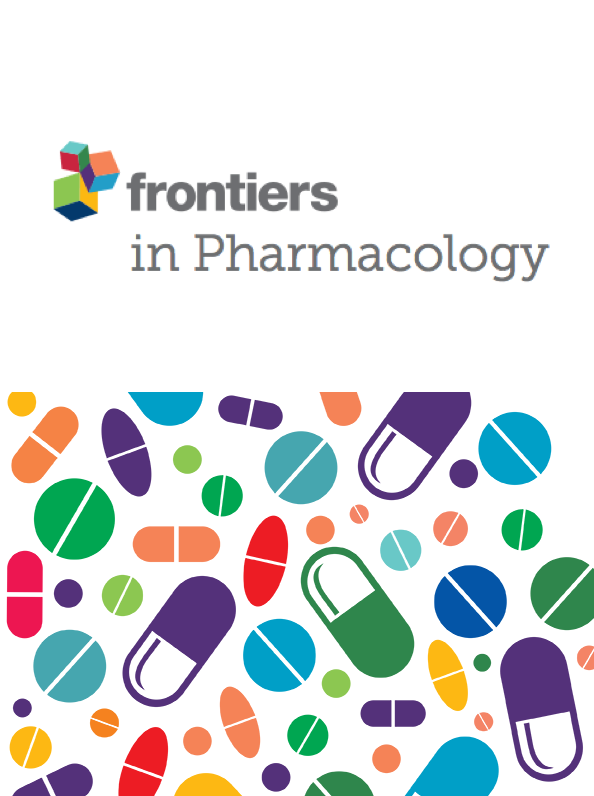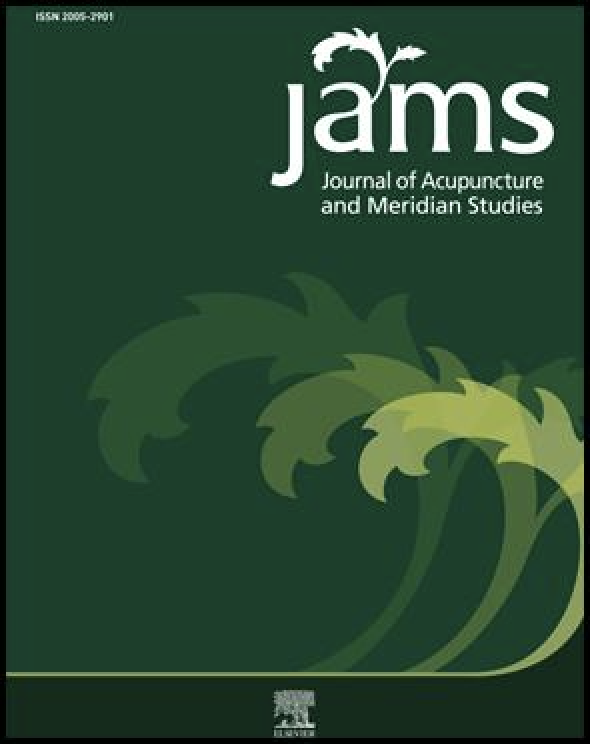Gui Zhi Fu Ling Wan
How to submit an article:
- Registered users can submit any published journal article that has a unique DOI (Digital Object Identifier) name or link to Research Hub.
- For example, you can paste the full DOI link:
https://doi.org/10.1109/5.771073or just the DOI name:10.1109/5.771073into the field above and click submit. - The person who is first to submit a valid article to Research Hub will forever be credited for it, and every article submission earns you +6 Research Points.
Published research studies are articles that present the findings of original research that has undergone a peer-review process and has been made publicly available in scholarly journals, books or other media.

Potential Mechanisms of Guizhi Fuling Wan in Treating Endometriosis: An Analysis Based on TCMSP and DisGeNET Databases
2024 Jul Journal of Ethnopharmacology Yee JL, Huang CY, Yu YC, Huang SJ
Systematic Review Endometriosis Gui Zhi Fu Ling WanGuizhi Fuling Wan, a traditional Chinese herbal formula, can inhibit endometriosis growth and enhance the effects of western medicines used to treat the condition.

Analysis of the Mechanism of GuizhiFuling Wan in Treating Adenomyosis Based on Network Pharmacology Combined with Molecular Docking and Experimental Verification
2022 Aug 26 Evidence-Based Complementary and Alternative Medicine Shi Y, Zhang C, Wang X, Wang Z, Zhang Y, Liu Z, et al.
Network Pharmacology Animal Study Adenomyosis Gui Zhi Fu Ling WanGui Zhi Fu Ling Wan can lessen the expression of certain proteins, which may be key to its ability to impede abnormal tissue invasion and metastasis in adenomyosis.

The Multiple Pharmacologic Functions and Mechanisms of Action of Guizhi Fuling Formulation
2022 Apr 29 Evidence-Based Complementary and Alternative Medicine Gao J, Yang J, Lu Z, Dong X, Xu Y
This review suggests that Guizhi Fuling Formulation (GZFL) displays promising therapeutic effects for many kinds of diseases, which have been beyond the scope of the original prescription for gynecologic diseases.
Review Article Gui Zhi Fu Ling Wan
The Traditional Chinese Medicine Prescription Pattern of Endometriosis Patients in Taiwan: A Population-Based Study
2022 Jan Frontiers in Pharmacology Ruei-Chi Fang, Yueh-Ting Tsai, Jung-Nien Lai, Chia-Hao Yeh, Chien-Tung Wu
Cohort Study Gui Zhi Fu Ling WanThe majority of reproductive age women with endometriosis in Taiwan use traditional Chinese medicine, specifically Gui Zhi Fu Ling Wan, to relieve related symptoms.

Combinatory effects of current regimens and Guizhi Fuling Wan on the development of endometriosis
2022 Jan Taiwanese Journal of Obstetrics and Gynecology Chen CC, Huang CY, Shiu LY, Yu YC, Lai JC, Chang CC, et al.
Animal Study Endometriosis Gui Zhi Fu Ling WanCombining traditional Chinese medicine Guizhi Fuling Wan with western hormonal therapies can potentially reduce their individual effectiveness in treating endometriosis.
Research insights are moderated by the Research Hub team and offer an at-a-glance overview of interesting research findings.

2024 Journal of Ethnopharmacology
Guizhi Fuling Wan, a traditional Chinese herbal formula, can inhibit endometriosis growth and enhance the effects of western medicines used to treat the condition.
Systematic Review Endometriosis
Potential Mechanisms of Guizhi Fuling Wan in Treating Endometriosis: An Analysis Based on TCMSP and DisGeNET Databases
Yee JL, Huang CY, Yu YC, Huang SJ

2022 Evidence-Based Complementary and Alternative Medicine
Gui Zhi Fu Ling Wan can lessen the expression of certain proteins, which may be key to its ability to impede abnormal tissue invasion and metastasis in adenomyosis.
Network Pharmacology Adenomyosis
Analysis of the Mechanism of GuizhiFuling Wan in Treating Adenomyosis Based on Network Pharmacology Combined with Molecular Docking and Experimental Verification
Shi Y, Zhang C, Wang X, Wang Z, Zhang Y, Liu Z, et al.

2022 Frontiers in Pharmacology
The majority of reproductive age women with endometriosis in Taiwan use traditional Chinese medicine, specifically Gui Zhi Fu Ling Wan, to relieve related symptoms.
Cohort Study
The Traditional Chinese Medicine Prescription Pattern of Endometriosis Patients in Taiwan: A Population-Based Study
Ruei-Chi Fang, Yueh-Ting Tsai, Jung-Nien Lai, Chia-Hao Yeh, Chien-Tung Wu

2022 Taiwanese Journal of Obstetrics and Gynecology
Combining traditional Chinese medicine Guizhi Fuling Wan with western hormonal therapies can potentially reduce their individual effectiveness in treating endometriosis.
Animal Study Endometriosis
Combinatory effects of current regimens and Guizhi Fuling Wan on the development of endometriosis
Chen CC, Huang CY, Shiu LY, Yu YC, Lai JC, Chang CC, et al.

2021 Evidence-Based Complementary and Alternative Medicine
Gui Zhi Fu Ling Wan treats adenomyosis by intervening in local estrogen signalling pathways and affecting estrogen resistance via myometrium signalling pathways.
Network Pharmacology Adenomyosis
Integrating Network Pharmacology and Experimental Validation Deciphers the Mechanism of Guizhi Fuling Wan against Adenomyosis
Wang H, Zhang J, Zhu Q, Fu X, Li C
Review Articles
Review articles summarise and critically evaluate the current state of research on a specific topic or field by synthesising multiple primary research studies.

Potential Mechanisms of Guizhi Fuling Wan in Treating Endometriosis: An Analysis Based on TCMSP and DisGeNET Databases
2024 Jul Journal of Ethnopharmacology Yee JL, Huang CY, Yu YC, Huang SJ
Systematic Review Endometriosis Gui Zhi Fu Ling WanGuizhi Fuling Wan, a traditional Chinese herbal formula, can inhibit endometriosis growth and enhance the effects of western medicines used to treat the condition.

The Multiple Pharmacologic Functions and Mechanisms of Action of Guizhi Fuling Formulation
2022 Apr 29 Evidence-Based Complementary and Alternative Medicine Gao J, Yang J, Lu Z, Dong X, Xu Y
This review suggests that Guizhi Fuling Formulation (GZFL) displays promising therapeutic effects for many kinds of diseases, which have been beyond the scope of the original prescription for gynecologic diseases.
Review Article Gui Zhi Fu Ling Wan
A Classic Herbal Formula Guizhi Fuling Wan for Menopausal Hot Flushes: From Experimental Findings to Clinical Applications
2019 Aug 18 Biomedicines Li , Hung , Li , Yang
Network Pharmacology Systematic Review Gui Zhi Fu Ling Wan Menopause Hot FlushesGuizhi Fuling Wan, a traditional herbal formula, can improve peripheral blood flow in menopausal hot flush sufferers, despite not changing the frequency or severity of the flushes.
Clinical Trials
Clinical trials are research studies that involve people and are conducted to evaluate the safety and efficacy of new treatments or interventions, such as drugs, medical devices, or behavioural therapies.
Study Protocols
Published study protocols are detailed plans that outline the objectives, methodology, statistical analyses, and organisation of a research study that have been made publicly available for others to review and use as a reference.
Presentation Slides

Systematic Review
Guizhi Fuling Wan, a traditional Chinese herbal formula, can inhibit endometriosis growth and enhance the effects of western medicines used to treat the condition.
Yee JL, Huang CY, Yu YC, Huang SJ

Network Pharmacology
Gui Zhi Fu Ling Wan can lessen the expression of certain proteins, which may be key to its ability to impede abnormal tissue invasion and metastasis in adenomyosis.
Shi Y, Zhang C, Wang X, Wang Z, Zhang Y, Liu Z, Wang X, Shi W

Cohort Study
The majority of reproductive age women with endometriosis in Taiwan use traditional Chinese medicine, specifically Gui Zhi Fu Ling Wan, to relieve related symptoms.
Ruei-Chi Fang, Yueh-Ting Tsai, Jung-Nien Lai, Chia-Hao Yeh, Chien-Tung Wu

Animal Study
Combining traditional Chinese medicine Guizhi Fuling Wan with western hormonal therapies can potentially reduce their individual effectiveness in treating endometriosis.
Chen CC, Huang CY, Shiu LY, Yu YC, Lai JC, Chang CC, Fu CF, Huang SJ

Network Pharmacology
Gui Zhi Fu Ling Wan treats adenomyosis by intervening in local estrogen signalling pathways and affecting estrogen resistance via myometrium signalling pathways.
Wang H, Zhang J, Zhu Q, Fu X, Li C

Study Protocol
Gynoclear™, a formulation of six herbs, could potentially reduce the severity and duration of pain and other symptoms associated with endometriosis.
Armour M, Al-Dabbas MA, Ee C, Smith CA, Ussher J, Arentz S, Lawson K, Abbott J

Experimental Study
Gui Zhi Fu Ling Wan can potentially reduce and induce apoptosis in uterine leiomyomas cells.
Lee SM, Choi ES, Ha E, Ji KY, Shin SJ, Jung J

Network Pharmacology
Guizhi Fuling Wan, a traditional herbal formula, can improve peripheral blood flow in menopausal hot flush sufferers, despite not changing the frequency or severity of the flushes.
Li , Hung , Li , Yang

Cohort Study
Gui-zhi-fu-ling-wan, a traditional Chinese medicine, can effectively alleviate hot flashes in young patients in a safe manner.
Cho KH, Kim YS, Jung WS, Kim TH

Randomised Controlled Trial
Gui-zhi-fu-ling-wan, a herbal therapy, depicts to be a viable alternative to hormone replacement therapy for treating hot flashes in post-menopausal women experiencing coldness in lower extremities.
Ushiroyama T, Ikeda A, Sakuma K, Ueki M
Executive Summary
Write an executive summary in the form of a blog article on the topic of "Research into Chinese medicine treatment for Gui Zhi Fu Ling Wan" summarising the research below and using language that can be easily understood by patients and avoiding medical jargon using a professional and caring tone of voice.
Write an executive summary in the form of a blog article on the topic of "Researched Chinese medicine treatments for Gui Zhi Fu Ling Wan" summarising the research below in an objective and easy to understand way, and using language that can be easily understood by patients. Group the article into Chinese medicine treatments first, followed by nutrition and other treatments. Avoid using medical jargon and use a professional and caring tone of voice.
Write me a concise but easy to understand executive summary on the topic of "Chinese medicine treatments for Gui Zhi Fu Ling Wan" based on the following research that I will give you. Your summary should be 2 paragraphs long in Australian English spelling and include references to the studies.
A Systematic Review published in 2024 in the journal Journal of Ethnopharmacology found that Guizhi Fuling Wan, a traditional Chinese herbal formula, can inhibit endometriosis growth and enhance the effects of western medicines used to treat the condition. In the methodology, a bibliographic assessment of publications on "Guizhi Fuling Wan" and "endometriosis" indexed in international and chinese databases was conducted. Out of these, five pre-clinical studies and thirteen clinical were selected. Thereafter, targeted molecules of each herb in the formula were extracted from a Traditional Chinese Medicine Systems Pharmacology Database and compared with endometriosis-related genes from DisGeNET. To expose potential therapeutic mechanisms of Guizhi Fuling Wan, pathway and gene ontology analyses were performed using David Bioinformatics Resources. In the results discussion, it was found that both pre-clinical and clinical studies suggested that Guizhi Fuling Wan can inhibit the growth of endometriotic lesions by modulating immunity, apoptosis-regulating molecules, and angiogenesis-associated factors, while also enhancing the effects of western medicines for endometriosis. The formula likely achieves this through its impact on key pathways involved in diabetes complications, Kaposi sarcoma-associated herpesvirus infection, human cytomegalovirus infection, and atherosclerosis, which all regulate inflammation, angiogenesis, and apoptosis. The review also notes a strong connection between endometriosis and abnormal inflammatory, angiogenic, and apoptotic activities.
A Network Pharmacology published in 2022 in the journal Evidence-Based Complementary and Alternative Medicine found that Gui Zhi Fu Ling Wan can lessen the expression of certain proteins, which may be key to its ability to impede abnormal tissue invasion and metastasis in adenomyosis. Firstly, an approach called network pharmacology was utilized which involved identifying active components of GuizhiFuling Wan (GFW), its drug targets and disease targets through public databases, and finding shared targets. The biological function and pathway of GFW in treating adenomyosis were analyzed. Then, the interaction and strength of binding between key components and targets of GFW were verified by a method known as molecular docking. In the animal part of the study, the impact of GFW on the expression of several proteins in mice with adenomyosis was observed using different staining, protein analysis, and immunohistochemical techniques. Through collecting and intersecting data, 26 common targets were identified, with the key active compounds being baicalein, sitosterol, and -sitosterol, and the key targets being certain proteins. Enrichment analyses showed that processes such as the positive regulation of vascular endothelial migration and signaling pathways were involved in regulating angiogenesis, invasion, and metastasis in adenomyosis. Furthermore, the molecular docking results suggested that the key active compounds had substantial binding potential with the key proteins. In vivo analysis suggested that GFW could decrease the serum content and protein expression of certain proteins in mice with adenomyosis. These findings reinforce the hypothesis that reducing the expression of these proteins might be a significant mechanism for GFW in inhibiting the invasion and metastasis of atypical tissues associated with adenomyosis.
A Cohort Study published in 2022 in the journal Frontiers in Pharmacology found that The majority of reproductive age women with endometriosis in Taiwan use traditional Chinese medicine, specifically Gui Zhi Fu Ling Wan, to relieve related symptoms. The methodology of this study involved analyzing the use of TCM among women with endometriosis in Taiwan. Researchers evaluated the usage, frequency of service, and the specific Chinese herbal products prescribed for endometriosis using a randomly sampled cohort of 1,000,000 beneficiaries from the National Health Insurance Research Database. In terms of results, it was found that most women with endometriosis used TCM in dealing with their symptoms. These women were more likely to seek out TCM treatment than those without symptoms. Gui-Zhi-Fu-Ling-Wan, a Cinnamon Twig and Poria Pill known for its sedative and anti-inflammatory properties, was the most commonly prescribed Chinese herbal formula. This specific TCM plays a significant role in treating the discomfort associated with endometriosis, showing a preference towards natural remedies over conventional ones.
A Animal Study published in 2022 in the journal Taiwanese Journal of Obstetrics and Gynecology found that Combining traditional Chinese medicine Guizhi Fuling Wan with western hormonal therapies can potentially reduce their individual effectiveness in treating endometriosis. In this study, endometriosis was induced in mice. This was achieved by suturing endometrial tissue onto the peritoneal wall of the subjects. The mice were then treated with varying combinations of Guizhi Fuling Wan (GFW), a traditional Chinese medicine, and current western hormonal therapies for a period of 28 days. The results show that the traditional Chinese medicine Guizhi Fuling Wan (GFW), hormonal therapies, and combinations of these two were able to inhibit the development of endometriosis. They also observed that these treatments, either alone or in combination, could inhibit the expression of Intercellular Adhesion Molecule 1 (ICAM-1) and Vascular Endothelial Growth Factor (VEGF). These agents could also reduce the population of macrophages in the peritoneal fluid while enhancing the B-cell population. However, when GFW was combined with hormonal therapies, it was observed that the efficiency of each agent individually was potentially reduced.
A Network Pharmacology published in 2021 in the journal Evidence-Based Complementary and Alternative Medicine found that Gui Zhi Fu Ling Wan treats adenomyosis by intervening in local estrogen signalling pathways and affecting estrogen resistance via myometrium signalling pathways. This study utilized network pharmacology, molecular docking and animal experiments to understand the treatment mechanisms of Guizhi Fuling Wan on adenomyosis. Initially, key indices and target components of the traditional Chinese medicine were identified through various databases, which resulted in isolation of 55 active ingredients and 44 targets specifically related to adenomyosis treatment. These components were then subjected to protein interaction analysis and compound-hub target network constructions. Main active elements and hub targets were subsequently studied with molecular docking tech. The pathway enrichment analysis showed that the medicinal effects were primarily linked to estrogen signaling, endocrine resistance, and a specific tyrosine kinase signaling pathway. The molecular docking revealed that significant compounds of Guizhi Fuling Wan had a strong binding ability with a couple of cellular receptors. Animal trials indicated that this medicine could reduce abnormal infiltration of specific cells without interrupting normal sexual cycles. These results point towards the importance of the estrogen signaling pathway and cell receptors in the treatment capabilities of Guizhi Fuling Wan.
A Study Protocol published in 2021 in the journal Trials found that Gynoclear™, a formulation of six herbs, could potentially reduce the severity and duration of pain and other symptoms associated with endometriosis. The methodology consisted of a randomized, double-blind, placebo-controlled trial with a minimum of 90 participants across Australia who have confirmed endometriosis and moderate or greater pelvic pain. These participants were equally divided to receive either Gynoclear™ or a placebo. Gynoclear's active ingredients consist of six herbs, namely Safflower, Chinese cinnamon, Hoelen, Tree peony, Peony, and Red sage. The participants were required to document their pain experiences for a total of five months, which included a month of screening, two months of treatment, and a month post-treatment. The main variable being studied was the change in endometriosis-related pain. The results of the study aimed to establish the efficacy of Gynoclear™ in reducing endometriosis-related pain and other symptoms. Secondary outcomes encompassed change in health-related quality of life, alterations in the use of rescue analgesics, and changes in sexual discomfort and fatigue. The practicality and usefulness of Gynoclear™ intended to serve both healthcare professionals and individuals suffering from endometriosis.
A Experimental Study published in 2019 in the journal Frontiers in Pharmacology found that Gui Zhi Fu Ling Wan can potentially reduce and induce apoptosis in uterine leiomyomas cells. In the study, human uterine myoma cells (hUtMCs) were collected from patients who had undergone surgery for this condition. The viability of these cells was tested when exposed to various doses of Gyejibongnyeong-hwan (GBH). Determination of adequate concentration for the treatment was also performed, ensuring that it did not affect normal cells adversely. Western blotting was employed to identify the expression levels of certain proteins that indicate cellular apoptosis, while the levels of reactive oxygen species were evaluated through fluorescence microscopy. Finally, the researchers looked into the time-dependent anti-neoplastic effect of GBH in order to establish an appropriate treatment duration under a non-harmful concentration of the medication. The results showed that Gyejibongnyeong-hwan (GBH) drastically reduced the viability and number of hUtMCs within 48 hours in a dose-dependent manner. It was identified that the ratio of certain proteins and the expression of other apoptosis-related ones increased, suggesting that GBH induced cellular self-destruction in uterine leiomyomas. Moreover, it was shown that GBH noticeably increased the mitochondrial concentration of reactive oxygen species. Conversely, by using certain inhibitors along with GBH, the apoptotic effect mediated by GBH was mitigated. This evidence suggests that GBH could potentially trigger apoptosis of leiomyomas and hence, presents a promising therapeutic agent in managing uterine leiomyomas.
A Network Pharmacology published in 2019 in the journal Biomedicines found that Guizhi Fuling Wan, a traditional herbal formula, can improve peripheral blood flow in menopausal hot flush sufferers, despite not changing the frequency or severity of the flushes. The methodology used in this study involved a comprehensive literature search across 20 English and Chinese databases for relative clinical and experimental studies. From the nearly 13,000 studies identified, only 46 were evaluated as relevant and thus included in the review. These articles were comprised of seven clinical studies detailing Guizhi Fuling Wan's effects on menopausal hot flushes and 35 phytochemical analysis studies that identified the 169 chemical compounds in the herbal formula. Four experimental studies were also utilized to discover the potential therapeutic effects and target proteins/cytokines related to these hot flushes. The findings indicate that Guizhi Fuling Wan, despite exhibiting no significant impact on the frequency or severity of menopausal hot flushes, may have positive effects on peripheral blood flow. The blood flow improvements were specifically noted in the fingertips, jaw, and toes. Additionally, the analysis of the herbal formula revealed 169 distinct chemical compounds. Through experimental studies, potential therapeutic effects on target proteins/cytokines - including estrogen receptor beta with genetic variation, the calcitonin gene-related peptide receptor, and interleukin-8, were further highlighted. However, these therapeutic effects were inconsistent across different studies, which may be due to dosage differences and genotype variation.
A Cohort Study published in 2011 in the journal Journal of Acupuncture and Meridian Studies found that Gui-zhi-fu-ling-wan, a traditional Chinese medicine, can effectively alleviate hot flashes in young patients in a safe manner. For the methodology, this study was conducted retrospectively, examining the medical records of patients who visited the Department of Cardiovascular and Neurologic Disease, Kyung Hee Oriental Medical Center for hot flashes from between October 1, 2003, to October 1, 2008. Out of 60 cases reviewed, 37 were selected based on the inclusion criteria. The primary measure of improvement was assessed using the visual analog scale. In the discussion of results, it was noted that the mean improvement in symptoms was significant and a majority of patients experienced a 50% improvement. The secondary analysis revealed that the outcomes of differential diagnosis of cold and hot syndrome and blood stasis syndrome did not affect the scores. Importantly, only a trivial percentage of patients reported adverse events, indicating that Gui-zhi-fu-ling-wan may be a safe therapy for hot flashes.
A Randomised Controlled Trial published in 2005 in the journal The American Journal of Chinese Medicine found that Gui-zhi-fu-ling-wan, a herbal therapy, depicts to be a viable alternative to hormone replacement therapy for treating hot flashes in post-menopausal women experiencing coldness in lower extremities. In this study, an examination of the connection between extremities' blood flow and hot flashes was conducted among 352 post-menopausal women aged between 46 and 58 who were showing climacteric complaints. 131 of these women, who were experiencing hot flashes, were treated either with HRT or Gui-zhi-fu-ling-wan, a type of herbal therapy. This investigation measured blood flow under the jaw, in the middle finger, and the third toe using laser doppler fluxmetry. Subsequent to the therapies, there was a notable decrease in the heightened blood flow under the jaw that is associated with hot flashes. However, the herbal therapy, Gui-zhi-fu-ling-wan, interestingly, increased blood flow in the lower extremities while the hormone replacement therapy did not. This suggests that Gui-zhi-fu-ling-wan does not uniformly affect the activity of the vasodilator neuropeptides on the sensory neurons of systemic peripheral vessels, thereby proving more effective in treating hot flashes accompanied with cold lower extremities.
Moderation Tools
Topic
Sign In
Users not signed in are limited to viewing the 5 most recent items of content.